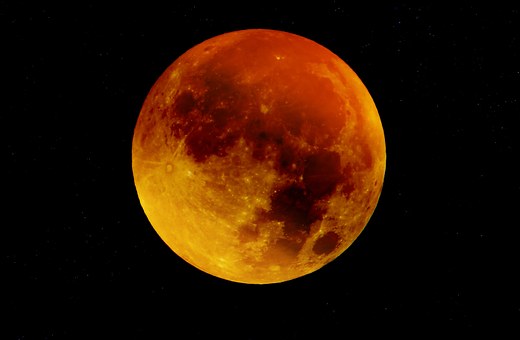A Face-off with the Face Recognition System
A Face-off with the Camera at the airport
The Delhi Airport has gone for a face change and no it’s not a change in the landscape. It’s the new Face recognition system that has been launched last week at T-3 terminal. Currently, only Vistara Airlines passengers can use it. So, next time if you are arguing with your wife or eyeing a beauty, be careful! “Upar wala dekh raha hai” (you are being watched by a camera).

Henceforth, you will have to first enroll along with flight tickets and ID proofs at the registration kiosk. Facial detail will be captured by the camera while the CISF will verify the ID. Once done, passengers can then approach the departure e-gates. The gates will be fitted with a facial recognition camera that will open automatically once the camera recognises you. The cameras will be watching and recognising you even at the security as well as the boarding gates.
Face Recognition System is here
Facebook is one of the first one to incorporate the face recognition system in its app. It uses an algorithm called DeepFace to detect faces when you upload a photo to its platform. On uploading the photos, it asks if you want to tag people in the uploaded photos. If you allow this, it automatically detects faces and creates a link to their profiles.

The latest smartphones use this technology to unlock the device. Apple’s iPhone first made facial recognition a household term. Banks are using it to verify transactions while supermarkets use it to identify customers and study their buying pattern. America’s Department of Homeland security will be using it to scrutinize 97% of outbound airline passengers by 2023.
China is already using a network of face recognition system to police the state of Xinjiang. The British police forces are using the technology as a tool of mass surveillance. The idea is to spot criminals on the street.
The Face Recognition apps
An app released by a Chinese firm a week back has become a craze all over the country. The app called “Zao” has been released by Momo Inc, a Tinder-like Chinese dating service.

The Zao app allows users to superimpose their images over popular cinema or any famous personality. The photo app can make you look like a movie star. Zao uses artificial intelligence to replace the faces of characters in film or TV clips with images of anyone whose photo you upload to the app.
Read more about the Zao App by clicking on the link:
https://www.youtube.com/watch?v=dJYTMhKXCAc
The users provide a series of selfies with different expressions like an open mouth or winking. The app then uses these images to morph the person’s favourite character onto movies, TV shows or other content.

FaceApp is an another Russian app is in news recently. It has been developed by Wireless Lab. The app uses artificial intelligence to generate a highly realistic transformed image of the person. The app can transform a users face to make it smile, look younger, look older, or change gender.
The Face Recognition Technology
Facial recognition analyzes the characteristics of a person’s face to identify or verify a person. It relies on machine learning, a sub-field of Artificial Technology. In machine learning, computers teach themselves to do tasks that their programmers are unable to explain to them explicitly.

A system is trained on thousands of examples of human faces. If the system identifies a face correctly, its rewarded. If it doesn’t then it’s penalised. The system is trained to distinguish images from those that do not. Gradually the system starts learning and identifying images. The algorithm takes into consideration a lot of crucial anatomical features. These range from distance between the eyes, to the location of nose relative to other facial features like eyes and chin etc.
However the computer vision is nothing like the human eye and that is a point of worry. And that can provide plenty of chinks in the artificial intelligence armour. One of the chinks in facial recognition technology is that the cameras used are sensitive to parts of infra-red light. The Hong Kong protesters have used this chink to the maximum. They point hand-held lasers at the CCTV cameras so as to avoid getting picked up by the police.

A face-off with privacy
The facial recognition system is going to help human beings in a big way but there are concerns on privacy. The main being that it intrudes into personal life. In San Francisco and Oakland, the police force have been forbidden from using it. In Britain, members of Parliament have called for a ban on police tests though without success.
Google also got entangled in the controversy recently when its employees forced the management to cancel a contract with Pentagon for an image-recognition system. It came under a cloud of suspicion for being leftist and conservative. Google has now laid out new staff guidelines. The staff has been advised to do the work they have been assigned to do and not to spend working time on debates about non-working topics.
Photo-apps and their controversial clauses
The controversy over the photo-applications apps is that they retain the rights to the user generated photos. The fear is that in future such apps like Zao and FaceApp can use it to their advantage.The clause is controversial as it says that the company gets a royalty-free, worldwide, fully paid rights.

The Zao app has come under controversy as the technology can be misused. It can create bogus videos so as to manipulate elections. On the other hand it can be used to spark unrest by spreading misinformation on massive scale. The Zao creators have said that they will try to fix the privacy as well as the misuse concern.
People are skeptical about Face recognition technology as they may have to give up the control over their images. The deepfake technology used by Zao and other apps can create manipulated photos and videos. Human beings will henceforth find it more difficult to differentiate the real from the fake.

Another risk is deepfake pornography. What if someone’s face is superimposed onto such explicit images and videos ?People can be blackmailed.
The Future
The face recognition system will soon become a part of our life. This biometric technology will make life much easier for us. Checking at the airport or marking attendance at office will make life simpler. But the privacy concerns will always be there.
So, get dressed up properly as a camera will click you soon.
You can read more such interesting stories by clicking on the following links:
The Identity Crisis: Creating more fizz than fuss
Driving an Electric Car: Charging ahead with full power
Acknowledgements: The Economist: Issue dt - Aug 17th 2019 / Topic - Face off, Page 60 The Times of India, Delhi edition












Comments
Leave a Comment